Certain of the superior and maximum Facultys on Byzantium
-University of Constantinople 5th - 15th century
Αscent from the 10-13th century. Then were the professors named "[filosofoi]" and "[maistroi]"and seats "[thronoi].
It functioned up to the Fall. It included rooms of teaching other and luxurious libraries.
-Faculty of Nice. It functioned in Nice from 1204 until 1261.
-Patriarchal academy. It was founded the 13th century.
-Faculty of Thessalonica. It was founded in 1330
-Faculty of Mystras. It was founded in 1390
-Faculty of abbey of Precursor, was founded by Ioannis Batatzis and with director Nikiforos Blemmydes.
-Academy of Positive sciences of Trapezoynta. It knew big growth on Megalokomninon. They were cultivated at period 1204-1461 mathematic and the astronomy.
-Faculty of Smyrni. It was founded by Nikiforos Blemmydes the 13th century.
-Faculty of Caesarea.
-Faculty of Efessos
Positive scientists on Byzantium
-Zosimos 4th-5th . Greek Alchemist from Panopoli of Egypt. Did he first use word " [Chimeia]" from the art of black ground of Egypt that is named "[chem]" One of the work of "[peri zython poiiseos]" it constitutes the ancienter recipe of beer.
-Pelagios 4th-5th,alchemist
-Dimokritos 4th-5th,alchemist -
[Maria Ioydaia] 4th-5th,[Alchimistria],student of [Dimokritoy]
-Asterios of Amasieys 5th,writer with study in the mathematics and the astronomy.
-Iakovos 5th,Doctor, pharmacologist and botanist
-Proklos Byzantios 5th-6th,Mathematician and philosopher
-Aetios 5th-6th, Doctor, pharmacologist and botanist
-Ammonios 5th-6th, Philosopher, mathematician and astronomer
The "forum" of Theodosius
-Ioannis Lydos 490-565 Historical, lawyer and astronomer from Philadelphia. -Ioylianos the architect 5th-6th . Engineer and architect. Acquaintance from a mechanism of pumping of water which it invented.
-Marinos Neapolitis 5th-6th.Neoplatonikos and mathematician. Successor Prokloyin the Academy.
-Simplikios 5th-6th . Philosopher and mathematician It taught in the Academy up to that closed also afterwards her closure went to the Persia for 5 years, where it taught. It returned however and taught in Istanbul. -AsklipiosTralleianos 6th . Neoplatonikos and geometris
-Anthemios Tralleianos 6th . architect (Saintly Wisdom) and writer
-Iliodoros Neoplatonikos 6th. Philosopher, mathematician and astronomer -Isidoros Milisios 6th.Architect and mathematician. It saintly completed Wisdom. Founded in the City Faculty of Engineers and existed their schoolteacher of last director of Academy Athens of Damaskos. -
-Isidoros Milisios the Newer 6th. Architect and engineer. Nephew of precedent. reconstruct the cupola of Saint Wisdom when it fell because earthquake the 558.
-Damaskios 6th . Greek neoplatonikos and mathematician, from Damascus. Last director of Academy.
-Eytokios 6th. Mathematician
-Ieroklis 6th. Geographer
-Ioannis Filoponos 6th . Philosopher, mathematician and astronomer Big philosophical and intellectual intellect of Byzantium. His work practised big effect in the natural sciences of middle ages but also newer years.
-Barlaam the Calabrian 1290 - 1348 Greek philosopher, astronomer, mathematician Schoolteacher of Petrarchi and Boccaccio. Writes Boccaccio in his letter on [Barlaam], between Greek's thres no exist other person with so much so much true wisdom and innumerable gnoseis" is considered one of the precursors of rebirth. Stiven Ransiman it considers him as one from the founders of modern algebra. It founded faculty in Thessalonica in which were taught the philosophy, the astronomy and the mathematics.
Nikiforos Grigoras, from Heraklion of Point 1295 - 1359
Big wise man of season of Palaiologon. Astronomer and mathematician and platonic philosopher. Studied close the question of timetable and the determination of his feast Easter. It ascertained the fault at the calculation of full moon afterwards vernal isimeria and by this it trained drawing of correction of Easte day. Did the drawing submit him to discussion in team of wise men the "Λογικήν Πανηγυριν" and in the emperor Androniko B' in 1324. The drawing was approved, but in order to does not become confusion between unlettered and causes division in the church, did not proceed in the correction. Thus the change of timetable did not become in 1324, other in 1578 from the priest Grig3orios the 13th and West.
etc..... if continue to write about them i need some days.....
so,read again what you wrote and if you have time read about them...if you need help pm to send you their names in Greek....
AND SOME PICTURES FROM BYZANTIO......
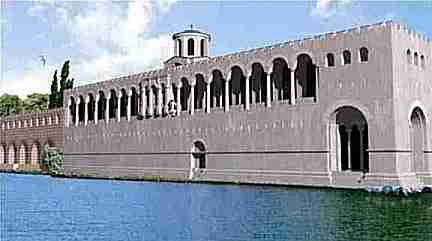
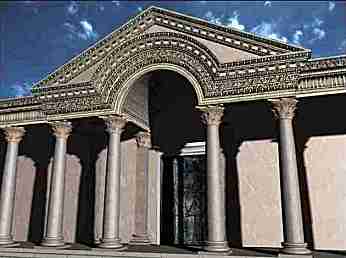
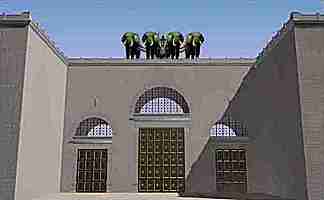
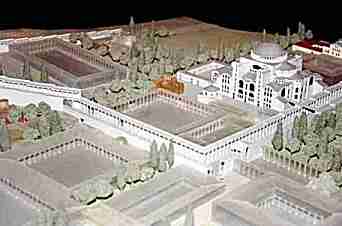
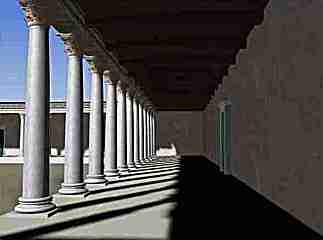
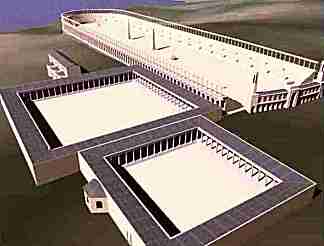
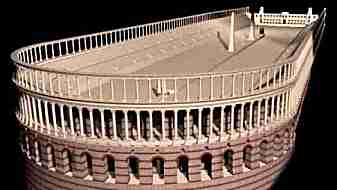
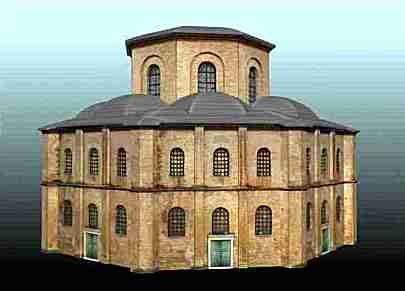
AND THIS ONE..........
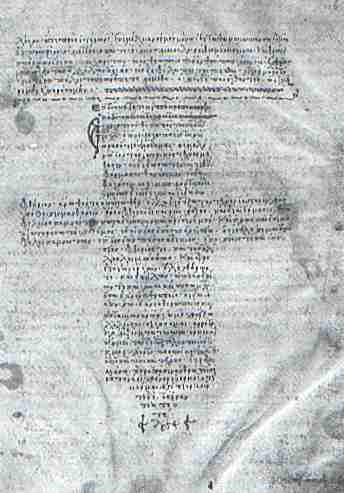
Infrequent depiction of Ippokrati's Oath in form of cross.
Byzantine of handwritten 12th century (Library Vatican)
(Source: magazine “Aeropos”, article “medicine of Byzantium”, Vassilios Spandagos(Βασίλειος Σπανδάγος), Doctor of - Historical Researcher of Chief doctor of Bank of Greece, page 27)
conclusion...
read my friend....read and dont believe what you see,try to find the unsee,try to look behind the curtain...
THE ECONOMIC HISTORY OF BYZANTIUM
From the Seventh through the Fifteenth Century
http://www.doaks.org/publications/doaks_online_publications/EHB.html
and many other books.....here..
http://www.doaks.org/publications/doaks_online_publications.htmlKarlomagnios found the eminent " [Palatini Akadimia]" with model the Platonic Academy of Athens. Her members had as honorary symbolic pseudonyms names or Bible, or ancient Greece and Rome, or famed nuns of Greek East ([l] David, Homer, Pindaros, Horace, Obidios, Birgilios,Antonios, Blissful). Also it adopted systems of organisation of Byzantine Church and education. In the schools of his state were taught or the Grammar, the Rhetorical and Dialectic (Trivium), or the Arithmetic, the Geometry, the Astronomy and the Music (Quatrivium). At the model of Byzantine grib laboratories of I. abbeys it founded scriptoria to copy and distribution of wealth of manuscripts. It gave impulse to growth, as in the Byzantium of historiography and chronikography. In his palace it used models of Greco-Roman architecture · the Byzantine art of mosaics, the mural, the illustration of books· chrysopoikiltikis ....
http://www.ecclesia.gr/greek/holysynod/anakoinothenta.asp?archive=yes&what_sub=announce&etos=1999&id=133
Bisanzio, that is the roman imperial State that perpetual for beyond thousand years on the Bosforo, where the same inhabitants, very lungi considering himself same Greeks, defined Roman, eredi of the Cesari and legitimizes holders dell' political and institutional inheritance of Rome. Bisanzio, the city that Costantino the Large one inaugurated which its happens them l' 11 May of the 330, a monday; Costantinopoli, the City d' Gold, the Queen of the Cities, the ricettacolo d' every wonder, admired and feared, it happens them of that which was the Superpotenza of the Middle Ages for 1123 years and 18 days, till those fatal 29 tuesdays May of 1453, when Mehmet II placed end to one glorious political history.
http://www.imperobizantino.it/Index-nuovo.htm
The Donation of Constantine, one of the most famous forged documents in history, played a crucial role in this. Henceforth, it was fixed policy in the West to refer to the emperor in Constantinople not by the usual "Imperator Romanorum" (Emperor of the Romans) which was now reserved for the Frankish monarch, but as "Imperator Graecorum" (Emperor of the Greeks) and the land as "Imperium Graecorum", "Graecia", "Terra Graecorum" or even "Imperium Constantinopolitanus".
This served as a precedent for Wolf who was motivated, at least partly, to re-interpret Roman history in different terms. Nevertheless, this was not intended in a demeaning manner since he ascribed his changes to historiography and not history itself.
Later a derogatory use of 'Byzantine' was developed.
Steven Runciman: " The Byzantine art was from the bigger faculties of art worldwide. No one ancient Greek could build Saintly Wisdom, this required very deep technique knowledge"

Μανουὴλ Χρυσολωρᾶς,
Γεώργιος Πλήθων-Γεμιστός,
Βησσαρίων,
Ιανὸς Λάσκαρις,
Δημήτριος Χαλκοκονδύλης,
Γεώργιος Τραπεζούντιος,
᾽Ιωάννης ᾽Αργυρόπουλος,
Μιχαὴλ Μάρουλλος Ταρχανιώτης,
-University of Constantinople 5th - 15th century
Αscent from the 10-13th century. Then were the professors named "[filosofoi]" and "[maistroi]"and seats "[thronoi].
It functioned up to the Fall. It included rooms of teaching other and luxurious libraries.
-Faculty of Nice. It functioned in Nice from 1204 until 1261.
-Patriarchal academy. It was founded the 13th century.
-Faculty of Thessalonica. It was founded in 1330
-Faculty of Mystras. It was founded in 1390
-Faculty of abbey of Precursor, was founded by Ioannis Batatzis and with director Nikiforos Blemmydes.
-Academy of Positive sciences of Trapezoynta. It knew big growth on Megalokomninon. They were cultivated at period 1204-1461 mathematic and the astronomy.
-Faculty of Smyrni. It was founded by Nikiforos Blemmydes the 13th century.
-Faculty of Caesarea.
-Faculty of Efessos
Positive scientists on Byzantium
-Zosimos 4th-5th . Greek Alchemist from Panopoli of Egypt. Did he first use word " [Chimeia]" from the art of black ground of Egypt that is named "[chem]" One of the work of "[peri zython poiiseos]" it constitutes the ancienter recipe of beer.
-Pelagios 4th-5th,alchemist
-Dimokritos 4th-5th,alchemist -
[Maria Ioydaia] 4th-5th,[Alchimistria],student of [Dimokritoy]
-Asterios of Amasieys 5th,writer with study in the mathematics and the astronomy.
-Iakovos 5th,Doctor, pharmacologist and botanist
-Proklos Byzantios 5th-6th,Mathematician and philosopher
-Aetios 5th-6th, Doctor, pharmacologist and botanist
-Ammonios 5th-6th, Philosopher, mathematician and astronomer
The "forum" of Theodosius
-Ioannis Lydos 490-565 Historical, lawyer and astronomer from Philadelphia. -Ioylianos the architect 5th-6th . Engineer and architect. Acquaintance from a mechanism of pumping of water which it invented.
-Marinos Neapolitis 5th-6th.Neoplatonikos and mathematician. Successor Prokloyin the Academy.
-Simplikios 5th-6th . Philosopher and mathematician It taught in the Academy up to that closed also afterwards her closure went to the Persia for 5 years, where it taught. It returned however and taught in Istanbul. -AsklipiosTralleianos 6th . Neoplatonikos and geometris
-Anthemios Tralleianos 6th . architect (Saintly Wisdom) and writer
-Iliodoros Neoplatonikos 6th. Philosopher, mathematician and astronomer -Isidoros Milisios 6th.Architect and mathematician. It saintly completed Wisdom. Founded in the City Faculty of Engineers and existed their schoolteacher of last director of Academy Athens of Damaskos. -
-Isidoros Milisios the Newer 6th. Architect and engineer. Nephew of precedent. reconstruct the cupola of Saint Wisdom when it fell because earthquake the 558.
-Damaskios 6th . Greek neoplatonikos and mathematician, from Damascus. Last director of Academy.
-Eytokios 6th. Mathematician
-Ieroklis 6th. Geographer
-Ioannis Filoponos 6th . Philosopher, mathematician and astronomer Big philosophical and intellectual intellect of Byzantium. His work practised big effect in the natural sciences of middle ages but also newer years.
-Barlaam the Calabrian 1290 - 1348 Greek philosopher, astronomer, mathematician Schoolteacher of Petrarchi and Boccaccio. Writes Boccaccio in his letter on [Barlaam], between Greek's thres no exist other person with so much so much true wisdom and innumerable gnoseis" is considered one of the precursors of rebirth. Stiven Ransiman it considers him as one from the founders of modern algebra. It founded faculty in Thessalonica in which were taught the philosophy, the astronomy and the mathematics.
Nikiforos Grigoras, from Heraklion of Point 1295 - 1359
Big wise man of season of Palaiologon. Astronomer and mathematician and platonic philosopher. Studied close the question of timetable and the determination of his feast Easter. It ascertained the fault at the calculation of full moon afterwards vernal isimeria and by this it trained drawing of correction of Easte day. Did the drawing submit him to discussion in team of wise men the "Λογικήν Πανηγυριν" and in the emperor Androniko B' in 1324. The drawing was approved, but in order to does not become confusion between unlettered and causes division in the church, did not proceed in the correction. Thus the change of timetable did not become in 1324, other in 1578 from the priest Grig3orios the 13th and West.
etc..... if continue to write about them i need some days.....
so,read again what you wrote and if you have time read about them...if you need help pm to send you their names in Greek....
AND SOME PICTURES FROM BYZANTIO......

Το βουκόλειον

Η είσοδος στο Σενάτο

Η Χρυσή Πύλη

Το μεγάλο Παλάτι

Ο Ζεύσιππος δίπλα από τον Ιππόδρομο

Ο Ζεύσιππος με θεά τον Ιππόδρομο

Ο Ιππόδρομος

Τρίκλινος Ναός
AND THIS ONE..........

Infrequent depiction of Ippokrati's Oath in form of cross.
Byzantine of handwritten 12th century (Library Vatican)
(Source: magazine “Aeropos”, article “medicine of Byzantium”, Vassilios Spandagos(Βασίλειος Σπανδάγος), Doctor of - Historical Researcher of Chief doctor of Bank of Greece, page 27)
conclusion...
read my friend....read and dont believe what you see,try to find the unsee,try to look behind the curtain...
THE ECONOMIC HISTORY OF BYZANTIUM
From the Seventh through the Fifteenth Century
http://www.doaks.org/publications/doaks_online_publications/EHB.html
and many other books.....here..
http://www.doaks.org/publications/doaks_online_publications.htmlKarlomagnios found the eminent " [Palatini Akadimia]" with model the Platonic Academy of Athens. Her members had as honorary symbolic pseudonyms names or Bible, or ancient Greece and Rome, or famed nuns of Greek East ([l] David, Homer, Pindaros, Horace, Obidios, Birgilios,Antonios, Blissful). Also it adopted systems of organisation of Byzantine Church and education. In the schools of his state were taught or the Grammar, the Rhetorical and Dialectic (Trivium), or the Arithmetic, the Geometry, the Astronomy and the Music (Quatrivium). At the model of Byzantine grib laboratories of I. abbeys it founded scriptoria to copy and distribution of wealth of manuscripts. It gave impulse to growth, as in the Byzantium of historiography and chronikography. In his palace it used models of Greco-Roman architecture · the Byzantine art of mosaics, the mural, the illustration of books· chrysopoikiltikis ....
http://www.ecclesia.gr/greek/holysynod/anakoinothenta.asp?archive=yes&what_sub=announce&etos=1999&id=133
Bisanzio, that is the roman imperial State that perpetual for beyond thousand years on the Bosforo, where the same inhabitants, very lungi considering himself same Greeks, defined Roman, eredi of the Cesari and legitimizes holders dell' political and institutional inheritance of Rome. Bisanzio, the city that Costantino the Large one inaugurated which its happens them l' 11 May of the 330, a monday; Costantinopoli, the City d' Gold, the Queen of the Cities, the ricettacolo d' every wonder, admired and feared, it happens them of that which was the Superpotenza of the Middle Ages for 1123 years and 18 days, till those fatal 29 tuesdays May of 1453, when Mehmet II placed end to one glorious political history.
http://www.imperobizantino.it/Index-nuovo.htm
The Donation of Constantine, one of the most famous forged documents in history, played a crucial role in this. Henceforth, it was fixed policy in the West to refer to the emperor in Constantinople not by the usual "Imperator Romanorum" (Emperor of the Romans) which was now reserved for the Frankish monarch, but as "Imperator Graecorum" (Emperor of the Greeks) and the land as "Imperium Graecorum", "Graecia", "Terra Graecorum" or even "Imperium Constantinopolitanus".
This served as a precedent for Wolf who was motivated, at least partly, to re-interpret Roman history in different terms. Nevertheless, this was not intended in a demeaning manner since he ascribed his changes to historiography and not history itself.
Later a derogatory use of 'Byzantine' was developed.
Steven Runciman: " The Byzantine art was from the bigger faculties of art worldwide. No one ancient Greek could build Saintly Wisdom, this required very deep technique knowledge"

Μανουὴλ Χρυσολωρᾶς,
Γεώργιος Πλήθων-Γεμιστός,
Βησσαρίων,
Ιανὸς Λάσκαρις,
Δημήτριος Χαλκοκονδύλης,
Γεώργιος Τραπεζούντιος,
᾽Ιωάννης ᾽Αργυρόπουλος,
Μιχαὴλ Μάρουλλος Ταρχανιώτης,
Σχόλια